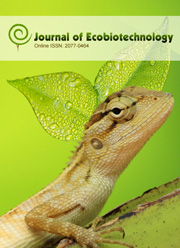Assessment of heavy metals in Hibiscus sabdariffa calyces and Moringa oleifera leaves collected from different areas in Tanzania
DOI:
https://doi.org/10.25081/jebt.2020.v12.6549Keywords:
Hibiscus sabdariffa, Moringa oleifera, heavy metals, Vikonje, Nzuguni A, Nzuguni B, Msanga, Mwime, Kongowe and ChalinzeAbstract
Medicinal plants are known in prevention and curing of diseases. Contamination of medicinal plants by heavy metals is one of the factors affecting quality of medicinal products from medicinal plants. Heavy metals may enter the edible and medicinal plants through contaminated environment such as water bodies, air or soil. Hibiscus sabdariffa calyces and Moringa oleifera leaves are used in Tanzania as nutritional and disease-remedial herbal drinks. This study assessed heavy metal contamination of Hibiscus sabdariffa calyces and Moringa oleifera leaves collected from Dodoma region (Vikonje, Msanga, Nzuguni A and Nzuguni B village), Pwani region (Kongowe and Chalinze village) and Shinyanga region (Mwime village). Lead, arsenic, chromium, cadmium and mercury were analyzed by Atomic Absorption Spectrometry. Microsoft excel 2010 software were used to analyze the means of heavy metal concentrations. Levels of chromium in the calyces and leaves of H. sabdariffa and M. oleifera ranged between 0.029-0.221 ppm and 0.019-0.088 ppm respectively while Arsenic was 0.096-0.204 ppm and 0.096-0.219 ppm, respectively. Mercury and Lead were found only in leaves of M. oleifera, mercury was between 0.017 ppm and 0.042 ppm and lead was 0.056 ppm. Cadmium was not detected in all plant materials. The concentrations of heavy metals in the selected samples were statistically significant at (P˂0.05). M. oleifera leaves and H. sabdariffa calyces, collected from different regions, had the low levels of heavy metals than recommended limits provided by the Tanzania Medicine and Medical Devices Authority (TMDA) and WHO.



 .
.